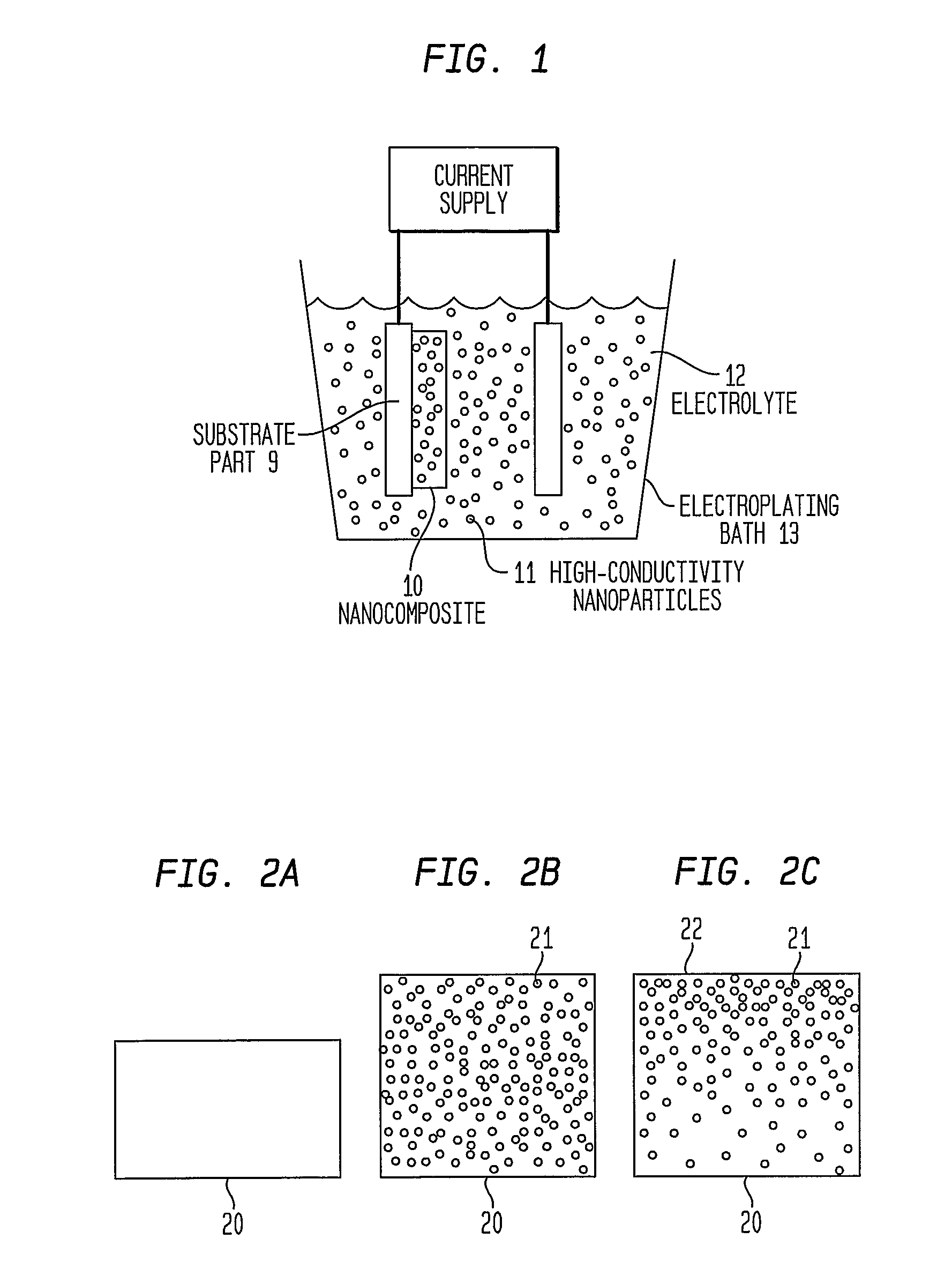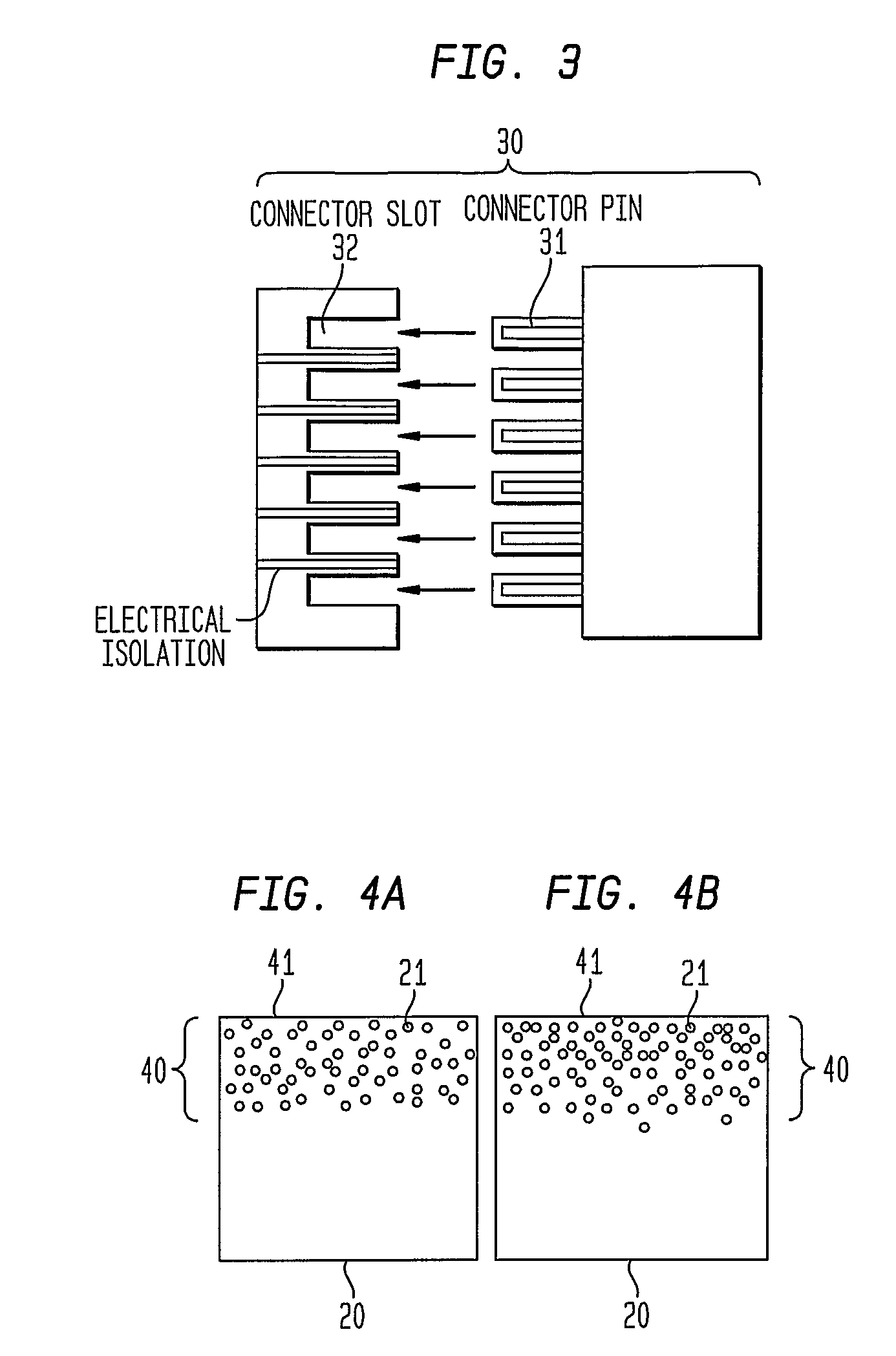Articles comprising high-electrical-conductivity nanocomposite material and method for fabricating same
a nano-composite material and high-electrical-conductivity technology, applied in the field of composite materials, can solve the problems of significant and undesirable electron multiplication, reduce the surface's sensitivity to arc or sputtering damage, etc., and achieve good thermal conductivity, enhance mechanical strength, and minimize field enhancement
- Summary
- Abstract
- Description
- Claims
- Application Information
AI Technical Summary
Benefits of technology
Problems solved by technology
Method used
Image
Examples
Embodiment Construction
[0017]In order to achieve a nearly ideal material for high power microwave devices, applicant has provided a high conductivity composite with mechanically-strengthening nanoscale dispersoid particles that have electrical conductivity essentially matched with that of the base matrix metal. This invention can utilize any one of three types of dispersoids, the first being highly conductive metal nanoparticles artificially alloyed so that the matrix contains no or little dissolved dispersoid metal, the second being dispersoid nanoparticles made of high-conductivity, intermetallic compound, and the third being dispersoids comprising carbide, nitride, boride or carbon nanoparticles.
(a). Artificially Alloyed Metal Nanocomposites
[0018]In traditional precipitation-hardened Cu alloys employing high temperature metallurgical reactions, the electrical conductivity of the matrix metal [ρ(Cu)˜1.67 μΩ-cm] is significantly reduced by the solute atoms that do not completely precipitate. Any alloying...
PUM
| Property | Measurement | Unit |
|---|---|---|
| diameter | aaaaa | aaaaa |
| diameter | aaaaa | aaaaa |
| volume fraction | aaaaa | aaaaa |
Abstract
Description
Claims
Application Information
 Login to View More
Login to View More - R&D
- Intellectual Property
- Life Sciences
- Materials
- Tech Scout
- Unparalleled Data Quality
- Higher Quality Content
- 60% Fewer Hallucinations
Browse by: Latest US Patents, China's latest patents, Technical Efficacy Thesaurus, Application Domain, Technology Topic, Popular Technical Reports.
© 2025 PatSnap. All rights reserved.Legal|Privacy policy|Modern Slavery Act Transparency Statement|Sitemap|About US| Contact US: help@patsnap.com



